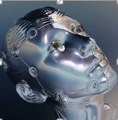A team led by Professor Ryan Abbott at the University of Surrey has successfully filed the first-ever patent applications for two inventions created by Artificial Intelligence (AI).

The AI inventor, named “DABUS” by its creator Stephen Thaler, relies upon a system of neural networks generating new ideas by altering their interconnections. A second system of neural networks detects critical consequences of these potential ideas and reinforces them based upon predicted novelty and salience.
Professor Adrian Hilton, Director of the Centre for Vision, Speech and Signal Processing, said: “Modern AI may fundamentally change how research and development takes place. In some cases, AI is no longer a tool, even a very sophisticated tool; in some cases, AI is automating innovation.”
One of the applications claims a new type of beverage container based on fractal geometry, while the other claims a device for attracting enhanced attention that may help with search and rescue operations.
The United Kingdom Intellectual Property Office (UK IPO) and the European Patent Office (EPO) have already indicated these applications appear new, inventive and industrially applicable, which are the primary requirements for an invention to receive a patent. However, the issue of AI inventorship has not yet been considered. Applications are also pending in the US and worldwide.
These applications will therefore require patent offices, courts and legislatures to confront outdated patent practices. There have been claims of AI generating inventions for decades, but an AI inventor has never been disclosed in a patent application. No country has a law specifically covering whether an invention generated by an AI can be patented, who or what qualifies as an inventor, or that provides for ownership of an AI-generated invention; traditionally in patent law, an inventor is the default owner of a patent. Most jurisdictions have historically restricted inventorship to natural persons in order to prevent corporate inventorship, which in principle should not be used to deny protection for AI-generated works.
Professor Abbott said: “In these applications, the AI has functionally fulfilled the conceptual act that forms the basis for inventorship. There would be no question the AI was the only inventor if it was a natural person. The right approach is for the AI to be listed as the inventor and for the AI’s owner to be the assignee or owner of its patents. This will reward innovative activities and keep the patent system focused on promoting invention by encouraging the development of inventive AI, rather than on creating obstacles.
“Powerful AI systems could hold the key to some of the mega challenges facing humanity – from the cure for cancer to workable solutions for reversing climate change. But if outdated IP laws around the world don’t respond quickly to the rise of the inventive machine, the lack of incentive for AI developers could stand in the way of a new era of spectacular human endeavor.”